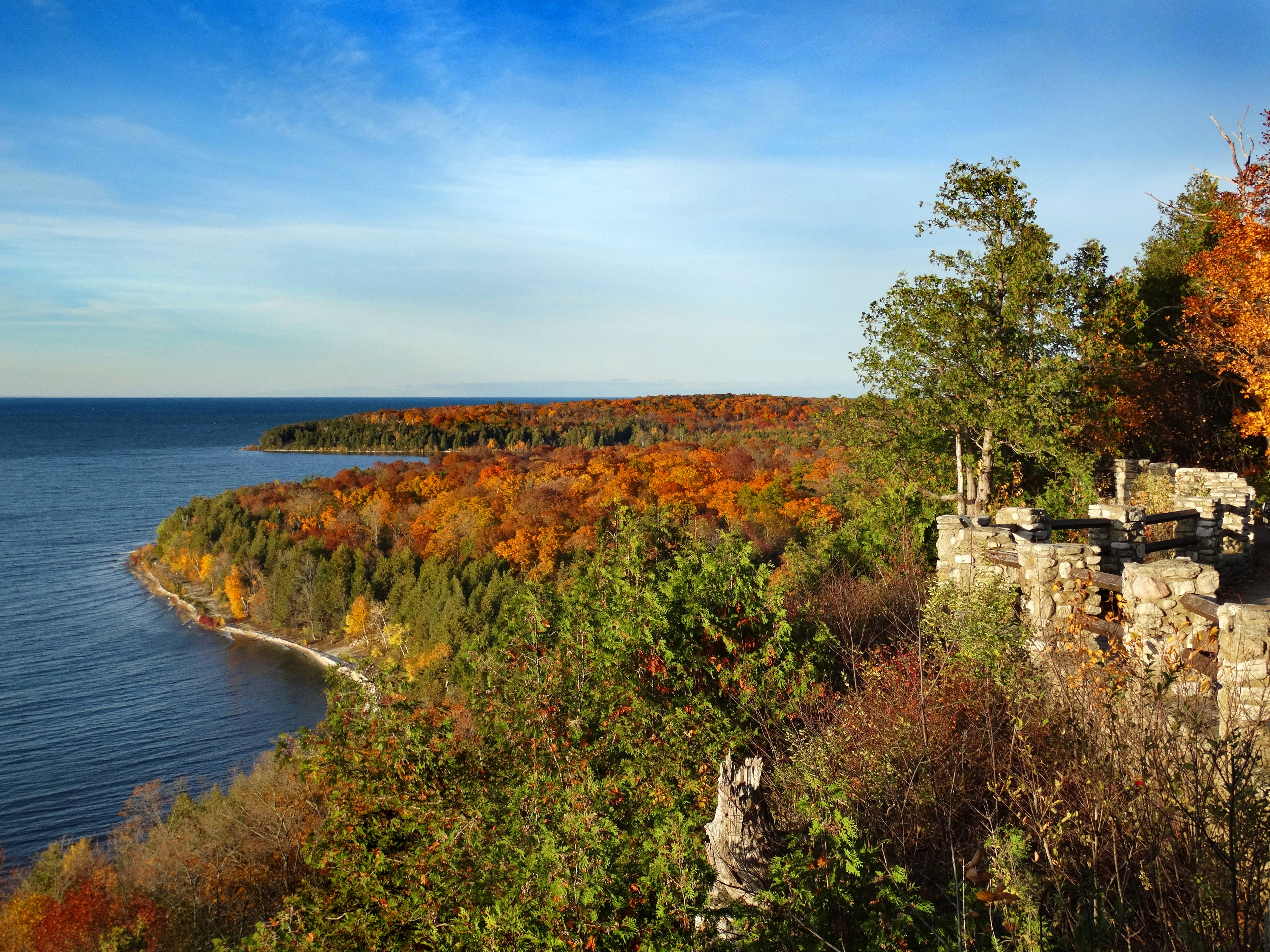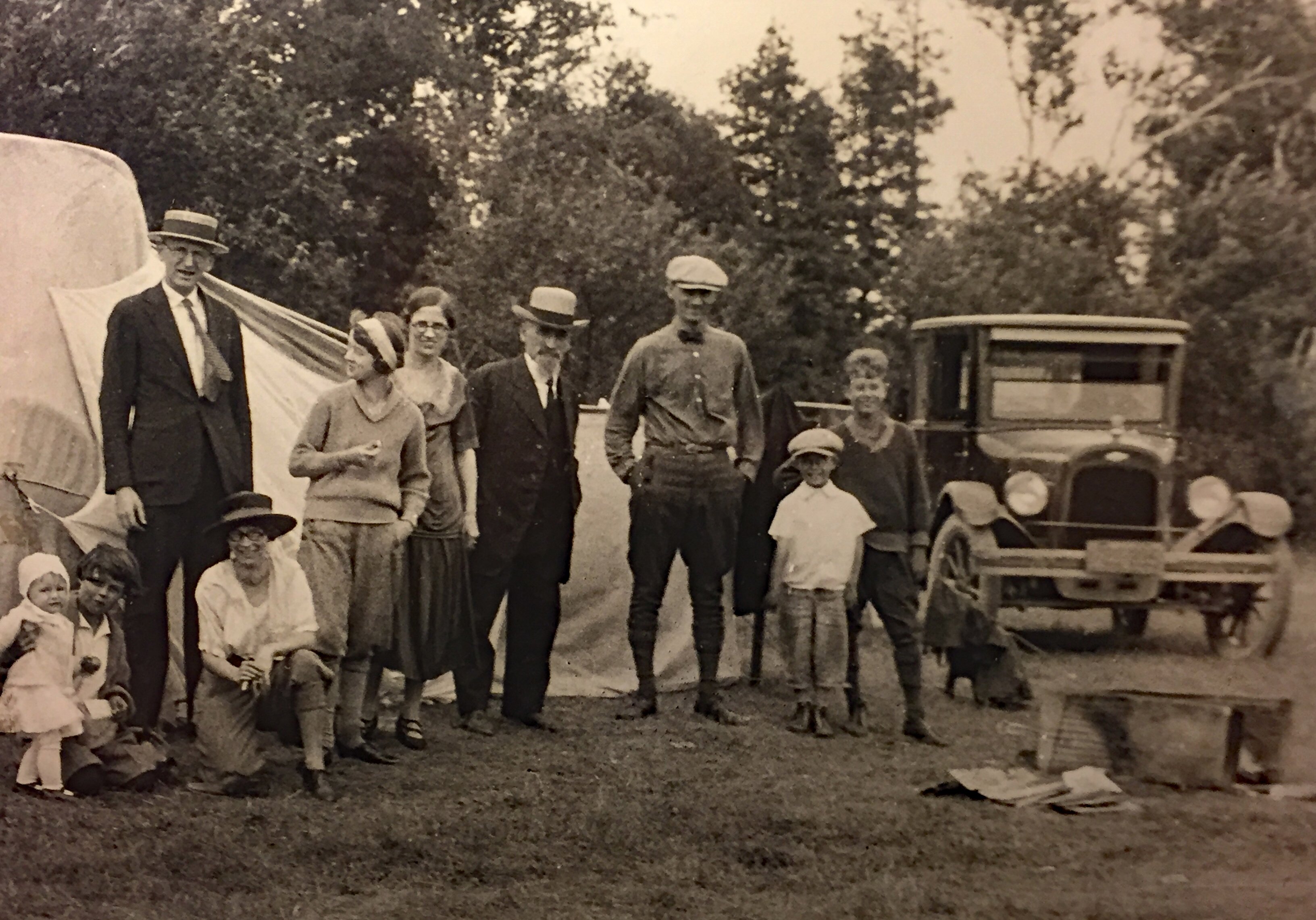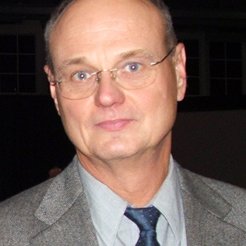
Wisconsin became a pioneer in the use of aviation for conservation work in the summer of 1915, when Logan “Jack” Vilas flew his Curtiss Flying Boat on fire patrol over the Northwoods of Iron and Vilas counties. A dozen years later, Wisconsin entered the record books again when the Conservation Commission made pioneer use of aircraft for forest insect control at Peninsula State Park in Door County.
Peninsula became the first state park entirely within the borders of Wisconsin in 1910 and its wooded hills and rocky shoreline made it a popular destination for auto tourists in the 1920s. In the summer of 1925 entomologists at the park discovered that 50 acres of hemlock trees containing about six million board feet of lumber had been destroyed by “spanworms.” Resembling the “inchworm” or “measuring” worm because it moves by raising its body into an arch then inching forward, the spanworm is a steady, voracious feeder. A severe infestation can strip a stand of hemlocks of all vegetation and kill the trees. By the end of the summer of 1925, all of Peninsula Park’s 700 acres of hemlock were threatened by the worms and the Conservation Commission voted to save them.
The art and science of crop-dusting, as it was known then, (aerial application today), was in its infancy. The practice had come into use in the southern states where powdered pesticide was dusted on cotton fields and peach orchards but was less known outside of Dixie. The Conservation Commission was able to locate a flyer in Illinois named Les Smith who operated the Decatur Flying Service. He flew a “Special” OX-5 Standard J-1, aptly christened “The Duster.” One of that admirably adaptable fleet of post-World War I-era planes that included the JN-4 and the Canuck, Smith’s J-1 was modified for dusting by the conversion of its front cockpit to a bin capable of holding 250 pounds of calcium arsenate pesticide. To apply the dust, the pilot cracked open a sliding hatch in the bottom of the bin, opened the throttle to push the J-1 to its top speed of 69 MPH, then let gravity and the slipstream go to work.
Smith began flying at Peninsula in July 1926, at the peak of tourist time, and his flights quickly became the spectacle of the season. “Airplane dusting is one of the most thrilling sights ever witnessed,” wrote eyewitness and State Entomologist S.B. Fracker in a report to the Wisconsin State Board of Agriculture. “From the tourist hotels across the harbor, a view of the tiny plane on the horizon with its slender thread of trailing dust above the dark green forest, was a sensation…”
Fracker was also in the forest during the dusting. He reported that the experience began when “a low humming would be heard in the distance. This would rapidly increase to a throbbing roar, and suddenly the plane would shoot into sight close over the tops of the trees, releasing a cloud of dust like a comet’s tail.” Fracker “could not help but admire the dexterity of the pilot, his daring and ability.”
Peninsula Park presented “serious difficulties in the use of an airplane… several rocky, precipitous bluffs from one to two hundred feet… and the plateau… intersected with the valleys from fifty to two hundred fifty feet in depth,” into which the plane had to descend “within twenty or thirty feet of the tops of the trees.”
Since the dust could not be applied when wind speed exceeded eight or nine miles per hour, Smith needed ten days to complete the job. He made 63 passes over the 700 acres, flying 252 miles while applying dust. He dropped a total of 15,575 pounds of calcium arsenate insecticide, which killed anywhere from 20 to 90 worms per square yard of hemlock forest. The cost, including about 1,000 miles of flight expenses to and from Decatur and Door County was $5,035. Since it halted the onslaught of the spanworms, the dusting was counted a success by the insect scientists and forest conservationists. As Fracker concluded, it was “Spectacular, as well as economical and effective.
Source: Bulletin No. 82, “Biennial Report of the Wisconsin State Department of Agriculture,” Madison, 1926.
This article, written by Michael Goc, was originally published in the Fall 2000 Forward in Flight newsletter.

